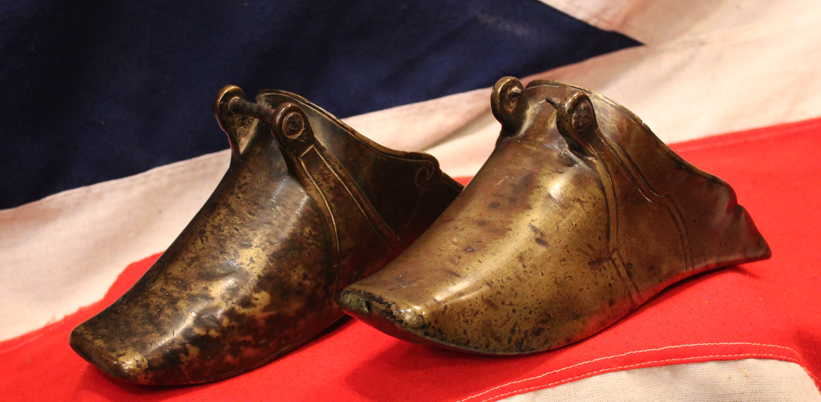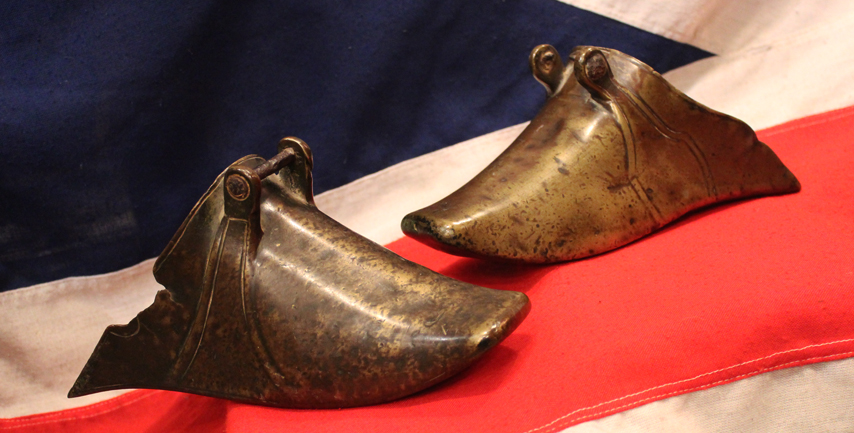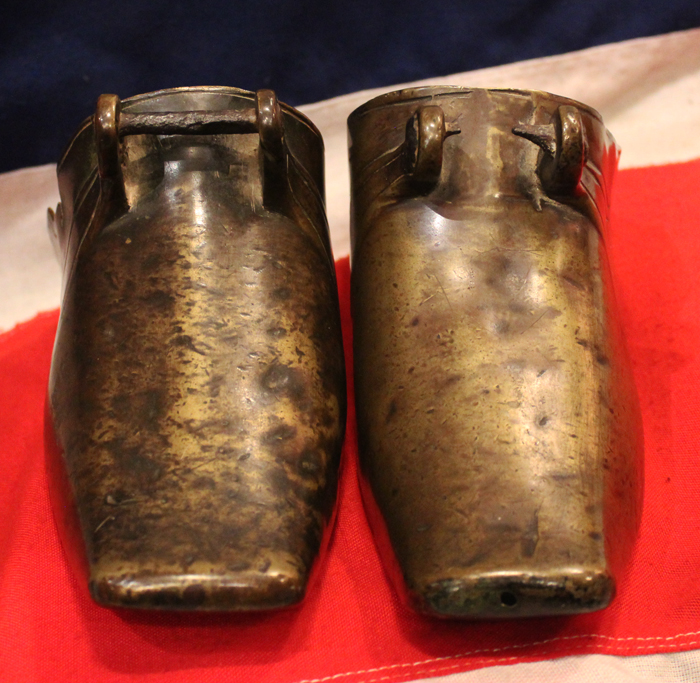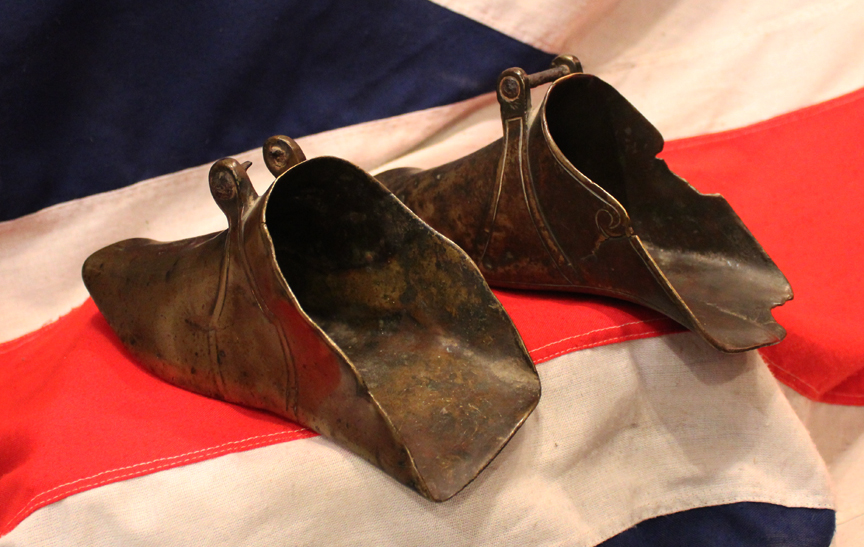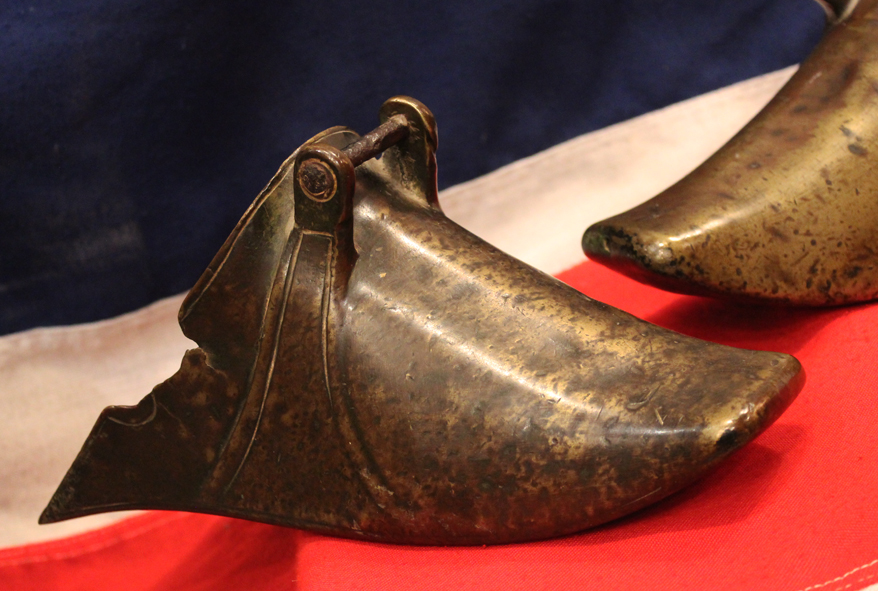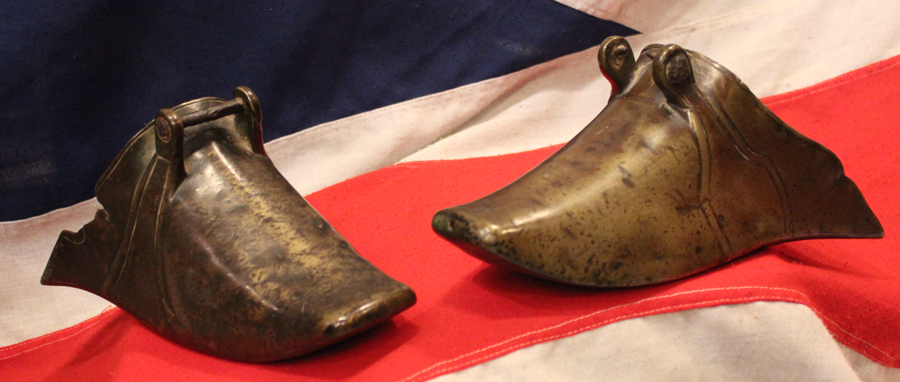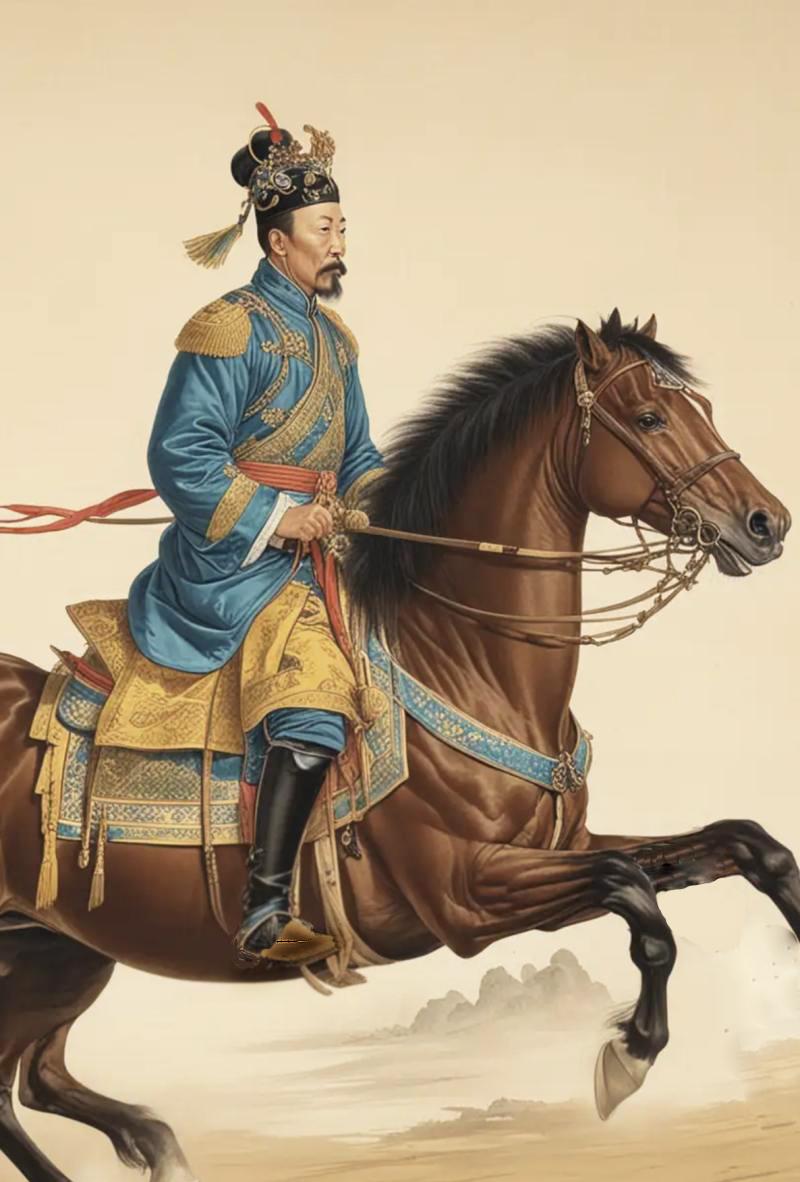A Beautiful & Most Rare Harlequin Pair of Bronze Armour Imperial Chinese Ching Dynasty 18th Cent. 'Shoe Style' Horse Stirrups. The Qing or Ching Dynasty, Officially the Great Qing, Was Also Called The Qing Empire by Itself or The Manchu Dynasty
Shaped like chinese shoes and worn as protective armour for the feet when a court official of the emperor, known as a mandarin, or Imperial officer of the Imperial Army, travelled around or into combat for the Ching Empire while on horseback.
The more regular type we are used to seeing today were used, but this most scarce high quality bronze 'shoe-form' type is very rarely seen to survive. Peasants in Qing China were not permitted to travel and certainly never on horseback. The stirrup was invented in China in the first few centuries AD and spread westward through the nomadic peoples of Central Eurasia. The use of paired stirrups is credited to the Chinese Jin Dynasty and came to Europe during the Middle Ages. Some argue that the stirrup was one of the basic tools used to create and spread modern civilization, possibly as important as the wheel or printing press.
The stirrup, which gives greater stability to a rider, has been described as one of the most significant inventions in the history of warfare, prior to gunpowder. As a tool allowing expanded use of horses in warfare, the stirrup is often called the third revolutionary step in equipment, after the chariot and the saddle. The basic tactics of mounted warfare were significantly altered by the stirrup. A rider supported by stirrups was less likely to fall off while fighting, and could deliver a blow with a weapon that more fully employed the weight and momentum of horse and rider. Among other advantages, stirrups provided greater balance and support to the rider, which allowed the knight to use a sword more efficiently without falling, especially against infantry adversaries. The Qing or Ching dynasty, officially the Great Qing, also called the Qing Empire by itself or the Manchu dynasty by foreigners, was the last imperial dynasty of China, established in 1636 and ruling China from 1644 to 1912 with a brief, abortive restoration in 1917. It was preceded by the Ming dynasty and succeeded by the Republic of China. The Qing multi-cultural empire lasted almost three centuries and formed the territorial base for the modern Chinese state. After conquering "China proper", the Manchus identified their state as "China", and referred to it as Dulimbai Gurun in Manchu (Dulimbai means "central" or "middle," gurun means "nation" or "state"). The emperors equated the lands of the Qing state (including present-day Northeast China, Xinjiang, Mongolia, Tibet and other areas) as "China" in both the Chinese and Manchu languages, defining China as a multi-ethnic state, and rejecting the idea that "China" only meant Han areas. The Qing emperors proclaimed that both Han and non-Han peoples were part of "China". They used both "China" and "Qing" to refer to their state in official documents, international treaties (as the Qing was known internationally as "China" or the "Chinese Empire") and foreign affairs, and "Chinese language" (Dulimbai gurun I bithe) included Chinese, Manchu, and Mongol languages, and "Chinese people" referred to all subjects of the empire. In the Chinese-language versions of its treaties and its maps of the world, the Qing government used "Qing" and "China" interchangeably.
This harlequin pair, is so called, as the left stirrup is very slightly different than the right, likely to identify which is which when removed from the saddle. The right stirrup iron hanging bar is lacking the mid section due to age loss. Iron perishes over the centuries whereas bronze does not. Small rear combat damage to the bronze on the left stirrup
Code: 20698
1195.00 GBP

